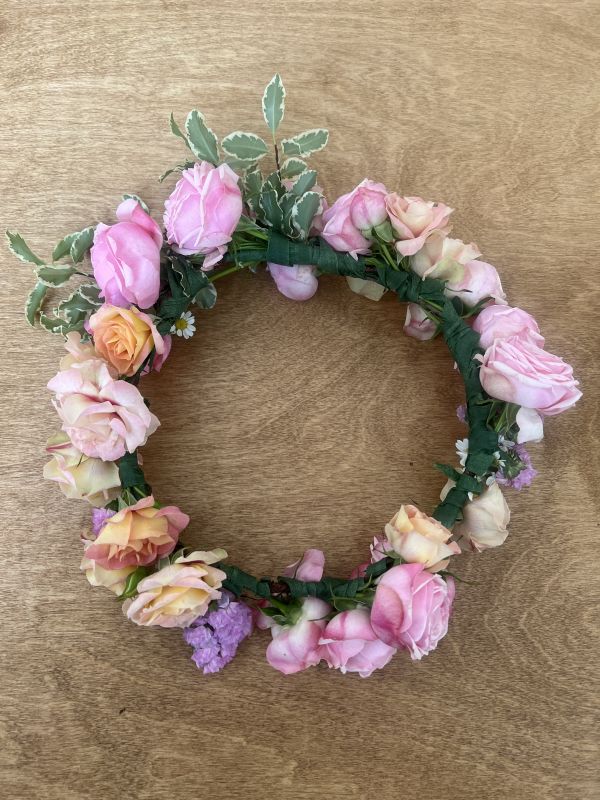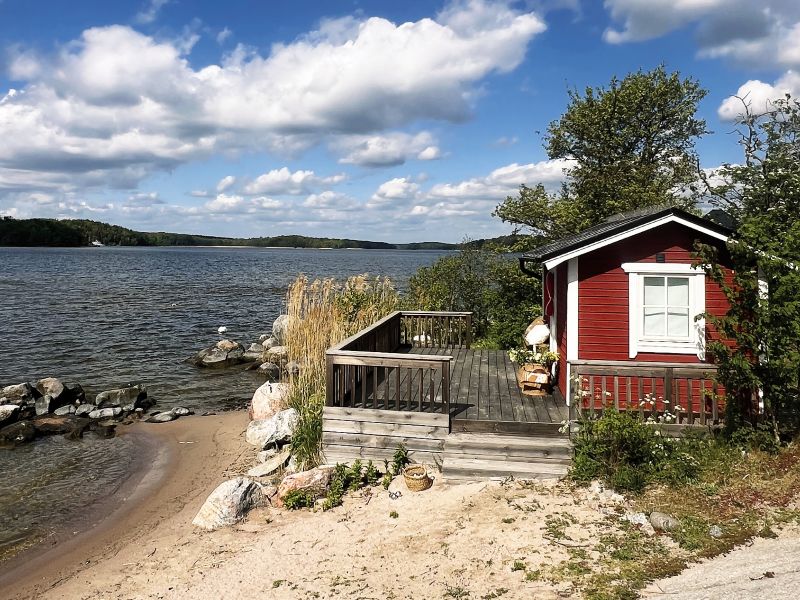
Langen finds inspiration in nature (All photos: Diana Khoo/The Edge)
Options: Next year marks a decade of Liza Langen Flowers. What have been the highlights of your journey so far?
Liza Langen: Last October, I released my first book, The Practice of Arranging Flowers, a reflection of the seasons through the medium of flowers. It was even more special to launch the book in our new studio in Södermalm, which is also Stockholm’s first flower shop specialising in seasonal blooms.
You practise seasonality and sustainability keenly. Why are these values important to you?
Natural seasons have always been very present in my life. The distinct changes as the months go by in a year are something I really appreciate. I make it a point never to take for granted the new energy every season brings. Therefore, it was very obvious to me to put seasonality at the centre of my work. Being in tune with nature also makes it easier to focus on working more sustainably, while always pursuing the best practices.
You mentioned that no Liza Langen design is ever repeated and each flower recipe is carefully curated. How do you continuously stay inspired?
The variety nature created for us, coupled with curiosity and observation, is my recipe. There is such abundance of material to create within each season that I don’t ever have to repeat myself.
img_8300.jpg

Tell us about the gardens of your childhood years, particularly that of your grandparents.
My grandparents’ garden was their lifelong dream and, ultimately, where my first memory of flowers is entrenched. Their garden was enveloped in apple and cherry trees, patches of lupins, roses, lilies, gladioli, dahlias and clematis, to name a few. Their decades-old peony shrubs bloom to this day. I remember the colours and textures of various flowers were abundant in any direction you looked, while fragrances permeated the air. How their garden transformed from one month to another is my eternal inspiration to also translate that feeling of change and renewal, while reminding me time and again how precious the present moment is when expressed through flowers.
Did you always want to work with flowers? What was your childhood ambition?
I always wanted to work in a creative field but, like many others, chose a different path after school and went on to study economics. After I moved to Sweden — I am originally from Russia but also lived briefly in Brazil and Italy — I was really missing home. So, buying and arranging flowers for home was my little ritual to connect back to my roots … and, again, my grandparents’ garden. This was my first step into floristry that really changed my life.
What are some of the flowers you enjoy working with most and why?
Every season has some special varieties, but my absolute favourites are fritillaries in spring and amaranthus in autumn. Fritillaries offer much variety and a very graceful shape, which adds something extra special to each arrangement. Amaranthus, meanwhile, has gorgeous texture and can be very long, which always makes creating with it more fun.
img_8412.jpg

What flowers will you be using for your own Midsommar crown this year?
We will definitely snip a few garden roses growing around my parents-in-law’s house and weave them together with summer tanacetum and grasses, a lively mix of our favourites.
You mentioned Midsommar is a major holiday for Sweden, celebrated over three to four days. How and where will you be spending the break?
We usually celebrate midsummer in Strängnäs, a beautiful little town outside Stockholm, with our closest friends. I’m really looking forward to disconnecting from work for a few days and spending time playing with the kids. The midsummer table will undoubtedly feature a lot of traditional dishes, like several types of herring, salmon, meatballs, potatoes, cheese pie and, of course, everybody’s favourite of strawberry meringue cake.
Where would you ask first-time visitors to Stockholm to go?
For traditional Swedish food, definitely visit Sturehof in the heart of the city or Pelikan in Södermalm. One of my favourite things to do is to simply stroll around Stockholm’s Hornstull neighbourhood. Start from Heleneborgs Båtklubb and walk towards the city by the sea. Oh, and be sure to stop by Svenskt Tenn, an iconic store, to explore Swedish design and buy some cool souvenirs.
This article first appeared on June 16, 2025 in The Edge Malaysia.


